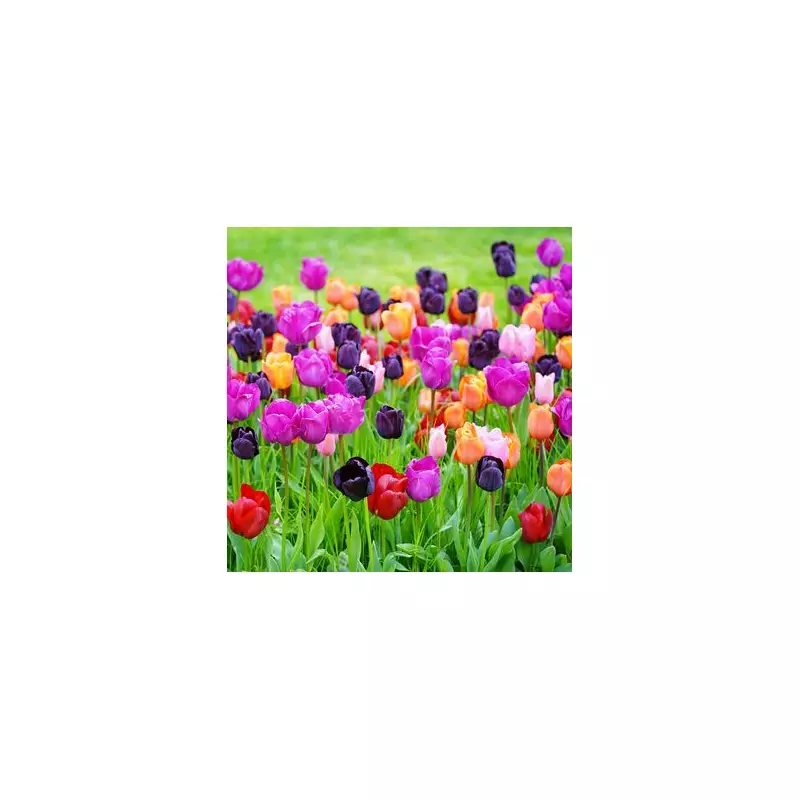
Gardeners across the UK are being urged to undertake a specific gardening job this November to protect one of the nation's most cherished plants from a devastating disease. Horticultural expert Diarmuid Gavin has issued an exclusive warning about tulip fire, a common fungal problem that can wreak havoc on tulip displays if preventative measures aren't taken.
The November Planting Window
November presents the perfect horticultural conditions for planting tulip bulbs, according to gardening professionals. The ground remains unfrozen but has cooled sufficiently to significantly reduce the risk of tulip fire taking hold. For those living in milder regions or further south in the country, this planting window can extend as late as December without compromising results.
Getting tulip bulbs into the ground during this period allows adequate time for root development, ensuring the plants establish themselves properly before their spring flowering period. This early settlement gives them the strongest possible foundation for producing those much-anticipated vibrant blooms when warmer weather returns.
A Psychological Boost and Historical Fascination
Beyond the practical gardening benefits, there's a significant psychological advantage to November tulip planting. The act of pressing these promising bulbs into the earth and imagining their future transformation into colourful flowers provides a welcome boost during the darker, colder months. It creates anticipation for spring's warmth and the visual delight these blooms will bring to gardens nationwide.
Tulips have maintained enduring popularity for centuries, with their appeal reaching extraordinary heights during 17th century Netherlands. The period known as Tulip Mania saw bulb trading reach exorbitant prices, sometimes equivalent to the cost of an entire house at its peak. This historical episode is widely considered one of the first recorded speculative economic bubbles that eventually collapsed.
Despite this dramatic history, tulips have never fallen from fashion. Fortunately for modern gardeners, they're now reasonably priced and easily sourced from garden centres and online retailers throughout the UK.
Choosing the Right Tulips and Companion Planting
Most tulip varieties don't return with the same size and colour intensity after their first year, leading many gardeners to treat them as annuals and plant fresh bulbs each November. However, exceptions exist, particularly among smaller species tulips that can naturalise successfully in suitable conditions.
Darwin hybrids represent an excellent investment for gardeners seeking perennial returns. These varieties come back year after year with minimal maintenance, featuring tall elegant stems and large, showy flowers that can open to approximately six inches in diameter. Their classic tulip shapes appear in rich jewel-like colours that make spectacular garden displays and excellent cut flowers.
Notable Darwin hybrid examples include 'Apeldoorn Elite' with its vibrant orange-red blooms and 'Apricot Impression' displaying beautiful apricot, pink and salmon petals. For those preferring softer colours, options like the icy pink 'Silver Cloud' and the delicate pale peachy 'Apricot Pride' offer more subtle beauty.
Tulips create impressive displays when grouped together in containers, whether using single colours or mixed varieties. In garden borders, they can sometimes appear sparse with visible bare soil around them, making companion planting an important consideration.
Bedding daisies, the cultivated form of common lawn daisies, work wonderfully as companion plants. Bred to produce larger flowers in pink, red or white, they create compact, neat fillers around tulip bases. Pretty pink pomponette daisies pair beautifully with similarly coloured tulips or create striking contrasts with white or purple varieties like 'Queen of the Night'.
Myosotis, commonly known as Forget-me-not, provides another popular planting partner. Its pretty sprays of blue flowers form a frothy carpet beneath tulips, complementing pastel-coloured varieties perfectly. For stronger colour contrasts, wallflowers in rich oranges and reds create dramatic effects. Early flowering primulas and pansies also serve as excellent companion plants that enhance overall displays.
Successful tulip cultivation requires planting in your sunniest spot with well-drained soil, reflecting their native habitat in the mountains of Turkey and steppes of central Asia where they enjoy free-draining conditions and long warm summers. Gardeners dealing with particularly heavy soil will likely achieve better results growing tulips in containers filled with free-draining compost.





